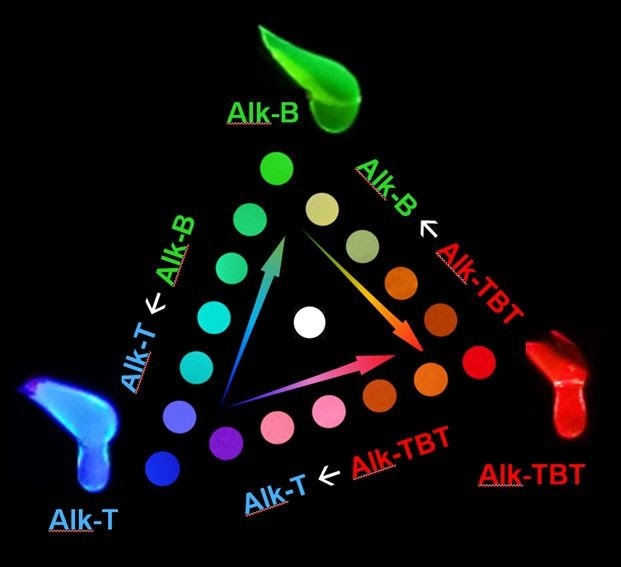Molecular Paints for the Future: Color-Tuned Alkyl-π Liquids Pave Way for Soft Electronics
Published on Quantum Server Networks | June 27, 2025

In the evolving landscape of flexible and wearable electronics, researchers are constantly on the hunt for new materials that are not only conductive and functional, but also bendable, paintable, and programmable. A new study out of Japan, published in the journal Science and Technology of Advanced Materials, demonstrates how a class of solvent-free molecular liquids known as alkylated-π (alkyl-π) liquids can be blended with precision to unlock vibrant, uniform colors—offering a pathway to highly adaptable soft electronics.
This innovation, spearheaded by a team at the National Institute for Materials Science (NIMS) in Tsukuba, introduces a simple yet elegant technique for adjusting the physical and optical properties of these promising materials without the need for costly synthesis or ineffective doping techniques.
What Are Alkyl-π Liquids?
Alkyl-π liquids are room-temperature molecular liquids that combine alkyl chains (providing fluidity) with π-conjugated cores (enabling light emission and electronic functions). Unlike traditional rigid semiconductors, these materials flow like ink, opening doors to printable, stretchable electronics.
Their biggest advantage? They're solvent-free, low-volatility, and tunable. But until now, controlling their optical properties with high precision was a challenge due to inconsistent blending methods or the need to develop entirely new molecules for each desired function.
A Simpler Solution Through Liquid–Liquid Blending
Rather than introducing dyes or creating new compounds from scratch, the researchers created three primary alkyl-π liquids that fluoresce in the red, green, and blue regions of the spectrum. These were then blended in varying proportions to produce a continuum of uniform, photoluminescent colors—each free of the irregularities typically caused by poorly soluble dopants.
“This study showcases a breakthrough method to create homogeneous, color-tunable, ink-like liquids by simply blending pre-made alkyl-π molecules,” said Dr. Takashi Nakanishi from NIMS. “No new synthesis or complex purification required.”
Proof of Concept: Fluorescence and Flow
To confirm the success of their technique, the team employed UV–Vis–NIR microspectroscopy and observed no color variation within the samples—indicating perfect molecular intermixing. Additionally, the team evaluated how the materials’ viscosity changed with temperature, verifying that the components remained well-blended under different conditions.
This is a critical validation step for potential real-world applications where stability under heat or mechanical stress is essential.
Applications: From Bioelectronics to Fashion Tech
These new alkyl-π liquid blends are more than just pretty colors. Their homogeneous fluorescence and liquid form make them ideal for:
- Wearable displays and health monitors
- Printable OLEDs and sensors
- Flexible photonics and optoelectronic skins
- Creative applications like smart textiles and art-tech
And since the blending method allows the modulation of other properties—like photoconductivity, charge retention, or gas sensitivity—future iterations of this research could yield fully customizable soft electronic materials designed for specific environmental responses.
A New Palette for Materials Scientists
This work adds to a growing body of research focused on functional molecular liquids, bridging the gap between traditional rigid electronics and dynamic, user-friendly materials. With further developments, these alkyl-π blends could become the foundation for next-generation bio-integrated devices, responsive surfaces, and even dynamic camouflage systems.
In the words of Dr. Nakanishi: “This means it will be possible to apply or coat the desired function with simple operations such as painting, sandwiching, or soaking the liquid materials wherever needed.”
Source and Further Reading
📖 Original article: AZoM – Researchers Explore Blending Strategy for Alkyl-π Liquids in Soft Electronics
Sponsored by PWmat (Lonxun Quantum) – a leading developer of GPU-accelerated materials simulation software for cutting-edge quantum, energy, and semiconductor research. Learn more about our solutions at: https://www.pwmat.com/en
📘 Download our latest company brochure to explore our software features, capabilities, and success stories: PWmat PDF Brochure
📞 Phone: +86 400-618-6006
📧 Email: support@pwmat.com

Comments
Post a Comment